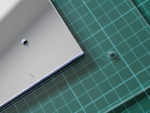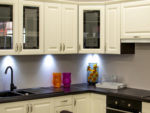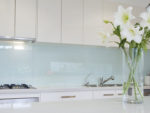This section has projects that cover all aspects of glass and acrylic splashbacks. Cutting and drilling acrylic is particularly challenging if you want a neat finish, so we explain how you can do this, and then there are also tips and hints for fitting both glass and acrylic splash backs
A splashback is the tiled or covered area of a wall behind the worktop, hob and sink in a kitchen. It’s primary purpose is to protect the wall from splashes and stains as you prepare and cook food. Most commonly they are tiled, but a whole range of materials are now used – see below for more details on the different types of materials that can be used for splashbacks.
For information about tiled splashbacks we have a section all about Tiling and Tiles. This will give you all the information for choosing and laying the tiles for your splashback, including applying the grout
Because splashbacks are designed to protect the wall from splashes and stains, if you are going to create a tiles one then it is advisable to use non-porous tiles such as ceramic or porcelain tiles. We have a section dedicated to working with these types of tile, as they do have particular considerations that you need to consider.
Different Types of Material Used for Kitchen SplashBacks
In this section we focus on two of the most commonly used materials (Glass and Acrylic) as these are fantastic DIY projects and they make a dramatic alternative to tiles. There are a number of other materials that you might want to consider also:
- Glass – These splash backs are sleek as they can be fitted in a single sheet with no joins along a single wall. They can be incredibly dramatic and varied in appearance; you could even get mirrored glass. They are durable, particularly with tempered glass, and easy to clean. Costs vary considerably but as they increase in popularity the cost are coming down. They are challenging to fit for a novice
- Acrylic – The range of acrylic splashbacks available is amazing and they can make a real feature in your kitchen. They are very easy to clean and maintain. The big advantage is the price which can be very favourable, however they cannot be fitted behind the hob as they are not heat tolerant
- Stainless Steel – This creates an “industrial” and functional feel in your kitchen. It is very hard wearing and relatively in-expensive. While it is very easy to clean you might need to clean if frequently as smudges and finger prints are easily seen
- Natural Stone – Typically this would be granite or marble to match the worktop or set it off. It is one of the most expensive options, but will be unique, as natural stone will always vary. It is easy to clean, but remember that granite is porous so needs treating and maintenance. Marble is prone to staining
- Laminate – These can be hugely varied with effects from natural stone to wood. It is very easy to clean and maintain but it’s much, much cheaper that real natural stone but can be very realistic and effective. The big downside is that laminate cannot be used behind a hob
- Composites – There are a huge range of composite material, generally part natural stone and part resin. This makes then non-porous and very easy to clean and maintain, while retaining the feel and effect of natural stone. Because they might contain resins, you should check if they are suitable for installation behind hobs
- Polished Plaster – The plaster behind the worktop can be treated and polished to create a very effective splashback. There are a range of effects that can be achieved while polishing and then complete it is easy to clean and maintain, although it is liable to chips which are not repairable
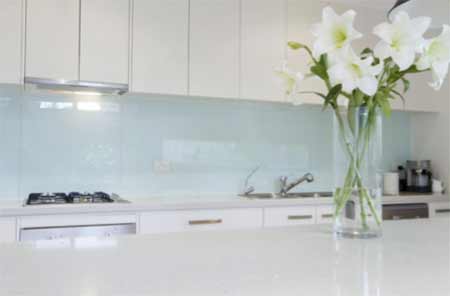
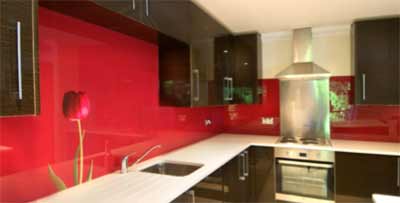



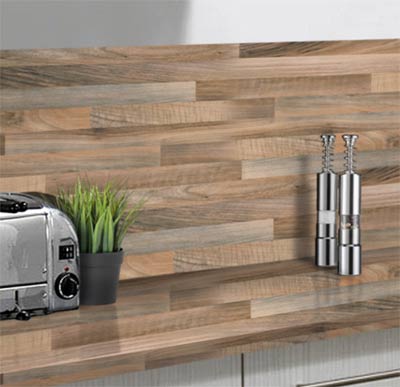
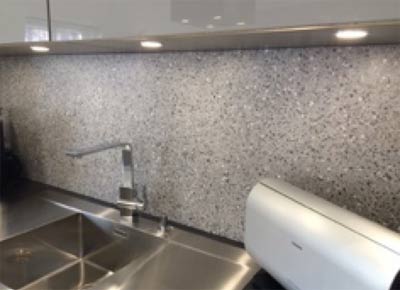
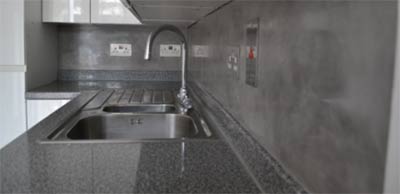
As you can see there is a huge range of different types of splashback and materials that can be used to make them. They all have their pros and cons, but a little research and you could have a very dramatic feature in your kitchen.

